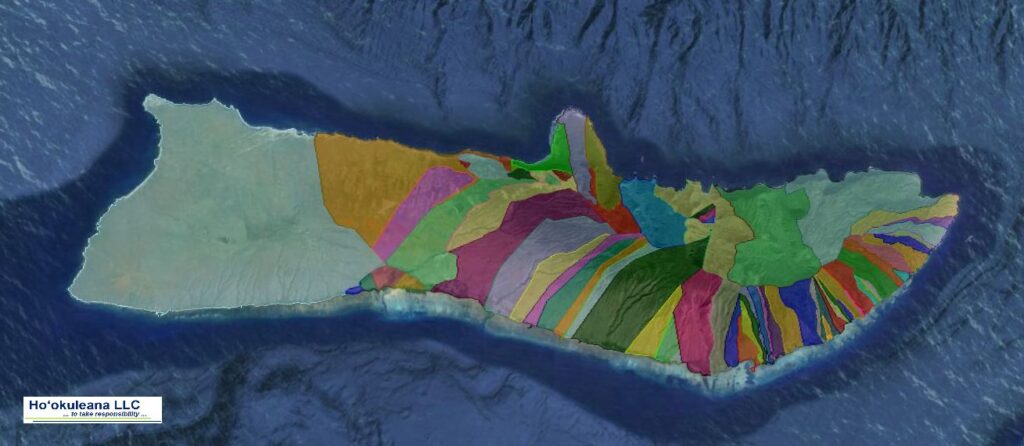The ancient name for the place was Neneʻu. It was also known as Māʻalaea. It’s at Waiʻanae, on the western coast of Oʻahu.
Pōka‘ī Bay (“night of the supreme one,”) named for Chief Pōka‘ī, has been the center of activity for the Waiʻanae Coast since pre-contact days.
Pōka’ī was reputed to have been a voyaging chief of Kahiki (Tahiti) who is credited with bringing the versatile and valuable coconut palm to the Islands.
A great grove of coconuts, Ka Uluniu o Pōkaʻī, lined the back shore of the entire bay and provided shelter and a vast array of materials for the village.
“In very ancient times, when the great Hawaiian chiefs and navigators sailed across the vast Pacific between Hawaiʻi and Kahiki, a legend arose about a voyaging chief named Pōkaʻī. It said that he brought and planted at Waiʻanae the first coconut tree in Hawai`i, from which grew in time a famous grove, Ka Ulu Niu o Pōkaʻī. The grove stretched from the site of the present police station to that of the Sacred Hearts Church…the bay makai of the grove, formerly known as Māʻalaea, eventually took the name of the legendary planter”. (Shefcheck, Spear)
Prior to contact with the western world the bay was the site of a famous fishing village with double-hulled canoes going in and out of the bay.
The south end of Pōkaʻī Bay is formed by Kaneʻilio Point (Kane’s dog’”,) a pointed peninsula that juts out into the sea. On this finger of land are remains of Kūʻīlioloa Heiau (“The long dog form of Kū”.)
Kūʻīlioloa was a kupua, a demigod, who could assume the form of a man or dog. He was a protector of the navigators. The names and symbolism related to the heiau incorporate the Hawaiian’s four primary gods: Kū, Kāne, Lono and Kanaloa.
The heiau name, Kūʻīlioloa, incorporates the god Kū; the name of the point, Kaneʻilio, incorporates the god Kāne; one of the major functions of this heiau is for navigation which incorporates the realm of Lono through the clouds and the heavens; and Kūʻīlioloa is also the only heiau in Hawaiʻi that is bordered on three sides by the ocean, which is the domain of Kanaloa.
Kūʻīlioloa is said to have been constructed by Lonokaeho who came to Hawai’i from Raiatea in the Society Islands in the 11th or 12th century.
One of the primary functions of the Heiau was as a training center and lighthouse for all navigation between Hawaiʻi and Tahiti. The location of this site allows specialists in astronomy to study the stars and celestial features.
In 1793, Vancouver described the area as desolate and barren, “From the commencement of the high land to the westward of Opooroah [Puʻuloa] was. . .one barren rocky waste, nearly destitute of verdure, cultivation or inhabitants, with little variation all to the west point of the island…. Nearly in the middle of this side of the Island is the only village we had seen westward of Opooroah… The shore here forms a small sandy bay. On its southern side, between the two high rocky precipices, in a grove of cocoanut and other trees, is situated the village. … The face of the country did not, however, promise an abundant supply.” (Shefcheck, Spear)
After 1819, when the kapu system was overthrown, Kūʻīlioloa was one of the few heiau which was still used by the community.
Prior to WWII the US government decided to utilize Kaneʻilio point by building a concrete bunker on the site of Kūʻīlioloa. Later, in the late-1970s, the Waiʻanae community rebuilt the heiau.
The Royal Order of Kamehameha, Moku O Kapuāiwa Chapter has a goal to turn the Heiau back into a training facility for kids and adults to learn about Hawaiian culture while being trained in ocean navigation.























































